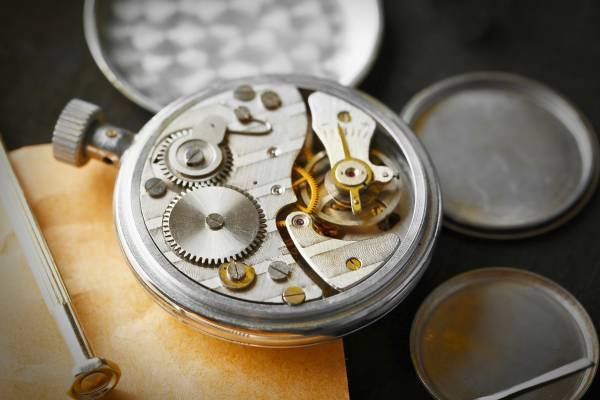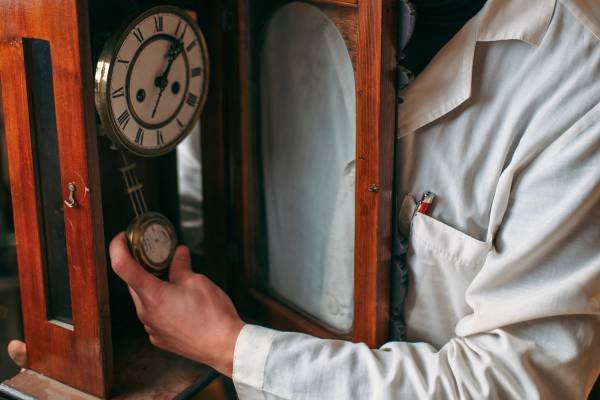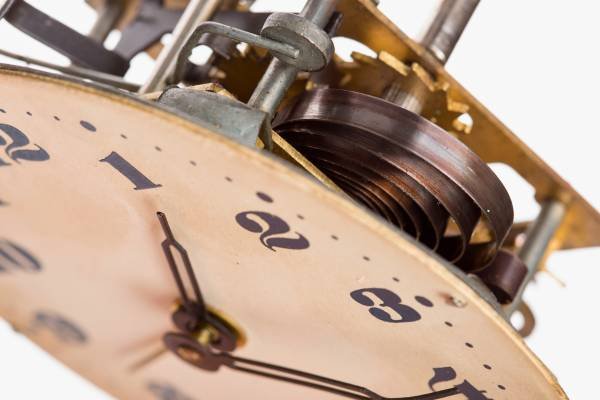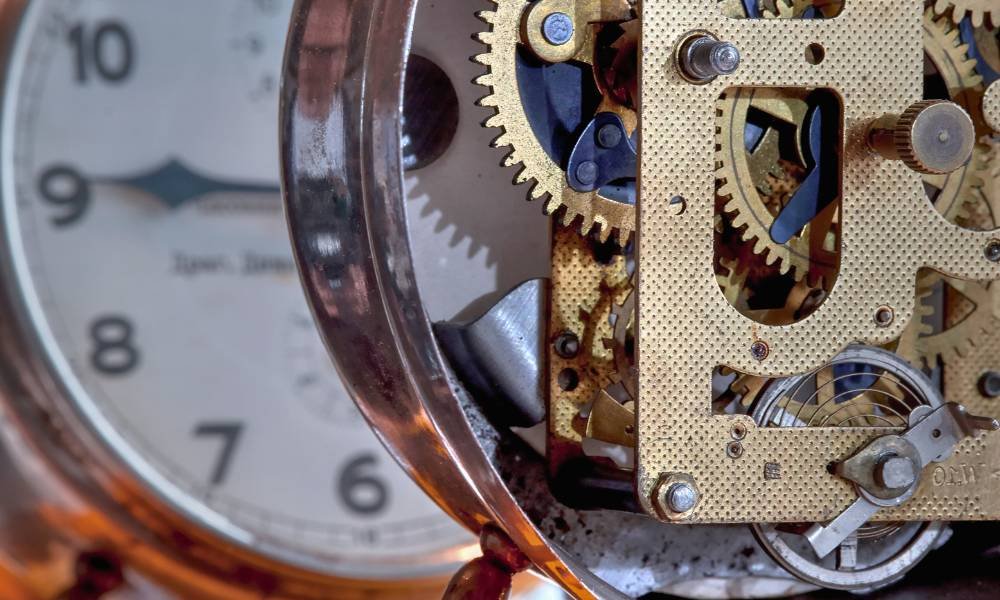Mechanical clocks are marvels of engineering, blending artistry with precision. If you’ve ever wondered, “How do mechanical clocks work?” you’re not alone. These timepieces have fascinated people for centuries, relying on intricate gears, springs, and escapements to keep time ticking accurately. In this article, we’ll explore the inner workings of mechanical clocks, from the mainspring that powers them to the pendulum or balance wheel that ensures their accuracy. Whether you’re a horology enthusiast or just curious, this guide will illuminate the fascinating mechanics behind these timeless devices.
How Do Mechanical Clocks Work: A Step-by-Step Process
- Winding the Mainspring: The clock is wound to store energy in the mainspring, which powers the entire mechanism.
- Energy Transfer to the Gear Train: The mainspring gradually releases energy, which is transmitted through a series of gears.
- Regulation by the Escapement: The escapement controls the release of energy, ensuring consistent movement.
- Movement of the Pendulum or Balance Wheel: The escapement’s action drives the pendulum or balance wheel, maintaining steady timekeeping.
- Driving the Hands: The gear train converts rotational movement into the motion of the clock’s hands.
- Time Display: The hour, minute, and second hands move across the dial, showing the current time.
- Maintenance for Accuracy: Regular lubrication and adjustments keep the clock functioning smoothly and accurately over time.
The Core Components of a Mechanical Clock

Mechanical clocks rely on four key components: gears, springs, escapements, and pendulums. The mainspring stores energy when wound, releasing it gradually to power the clock. Gears transmit this energy through the clock, controlling the movement of the hands. The escapement acts as a regulator, ensuring the gears move at a consistent rate, which is crucial for accurate timekeeping. Finally, the pendulum or balance wheel maintains steady motion, working in harmony with the escapement to keep the clock ticking precisely. Together, these components create the intricate dance that defines mechanical timekeeping.
The Mainspring: The Power Source
The mainspring is the heart of a mechanical clock, acting as its primary power source. When you wind the clock, the mainspring stores energy by coiling tightly. As it gradually unwinds, it releases this stored energy, which powers the gear train and drives the clock’s hands. This controlled release of energy ensures the clock runs smoothly over time. Regular winding is crucial, as it keeps the mainspring energized and the clock accurate. Without proper winding, the clock would stop, making the mainspring’s role essential for continuous timekeeping.
Gear Train: Transmitting Power
The gear train is essential in mechanical clocks, transferring energy from the mainspring to the escapement. As the mainspring unwinds, it releases energy that passes through a series of gears, each with specific ratios. These gear ratios are carefully designed to control the speed at which the energy is transmitted, ensuring accurate movement of the clock’s hands. By regulating the flow of energy, the gear train maintains consistent timekeeping, allowing the escapement to function smoothly and the clock to display the correct time.
The Escapement: Regulating Time
The escapement is crucial in mechanical clocks, controlling the release of energy to regulate time. It ensures that the clock’s gears advance in precise increments. The most common types include the anchor, which uses a pallet and gear wheel to control movement; the cylinder, which provides a smooth and consistent action; and the lever, known for its accuracy and reliability. Each type of escapement plays a vital role in maintaining the clock’s precision, contributing to its overall accuracy and longevity. Understanding these mechanisms sheds light on how mechanical clocks achieve their remarkable timekeeping.
The pendulum: ensuring accuracy

The pendulum, or balance wheel in mechanical clocks, is crucial for maintaining accurate time. It acts as a regulator, swinging or oscillating at a consistent rate, which controls the movement of the clock’s hands. The length of the pendulum directly affects timekeeping precision; a longer pendulum swings more slowly, while a shorter one swings faster. This relationship ensures that the clock’s gear train moves at a steady, precise pace, resulting in accurate timekeeping. By finely tuning the pendulum’s length, mechanical clocks can achieve remarkable accuracy, making the pendulum an essential component in clock mechanics.
The dial and hands: Displaying Time
The dial and hands of a mechanical clock are crucial for displaying time accurately. The gear train, driven by the mainspring and escapement, translates mechanical movements into the motion of the hour, minute, and second hands. Each gear ratio is meticulously calculated to ensure that these hands move in sync, reflecting precise time. The gears reduce or amplify the rotational speed from the mainspring, allowing the hands to move smoothly across the clock face. This intricate mechanism ensures that the time shown is accurate and reliable, making mechanical clocks both functional and captivating.
The Role of Lubrication and Maintenance
Lubrication and maintenance are crucial for the optimal performance of mechanical clocks. Regular upkeep ensures smooth operation by reducing friction between moving parts, which can otherwise lead to wear and tear. Over time, lack of lubrication can cause gears to grind and the clock to lose accuracy. Common issues include sticking gears and erratic timekeeping, both of which can be mitigated through routine cleaning and lubrication. Proper maintenance not only extends the lifespan of the clock but also maintains its precision, ensuring reliable timekeeping for years to come.
Advancements in Mechanical Clocks

Modern advancements in mechanical clocks have significantly enhanced their accuracy and reliability. Innovations such as improved materials and precision-engineered components have refined the performance of these classic timepieces. Unlike electronic clocks, which use digital technology for timekeeping, mechanical clocks rely on intricate gear systems and escapements. Despite the rise of electronic alternatives, the enduring appeal of mechanical clocks lies in their craftsmanship and timeless design. Their intricate mechanisms continue to fascinate enthusiasts and collectors, making them valued for both their functional precision and artistic merit.
FAQs for “How Do Mechanical Clocks Work?”:
1. What powers a mechanical clock?
✅A mainspring stores and releases energy to power the clock.
2. How does the escapement mechanism function?
✅The escapement regulates energy release for consistent timekeeping.
3. What is the role of the pendulum or balance wheel?
✅It maintains a steady rhythm for accurate timekeeping.
4. Why is maintenance necessary?
✅Regular upkeep prevents wear and ensures accurate performance.
5. How have modern advancements improved accuracy?
✅Innovations in materials and manufacturing enhance precision and reliability.
Conclusion: The Timelessness of Mechanical Clocks
In exploring “How do mechanical clocks work?” we uncover the remarkable blend of tradition and technology. Mechanical clocks have captivated enthusiasts for centuries with their intricate designs and precise timekeeping. Their timeless appeal lies in their craftsmanship and the intricate interplay of gears, springs, and escapements. Despite the rise of digital alternatives, mechanical clocks continue to be celebrated for their artistry and reliability. Advances in materials and engineering have only enhanced their accuracy, proving that while technology evolves, the charm of mechanical timepieces endures. Understanding their mechanics offers a glimpse into the enduring legacy of these classic instruments.
